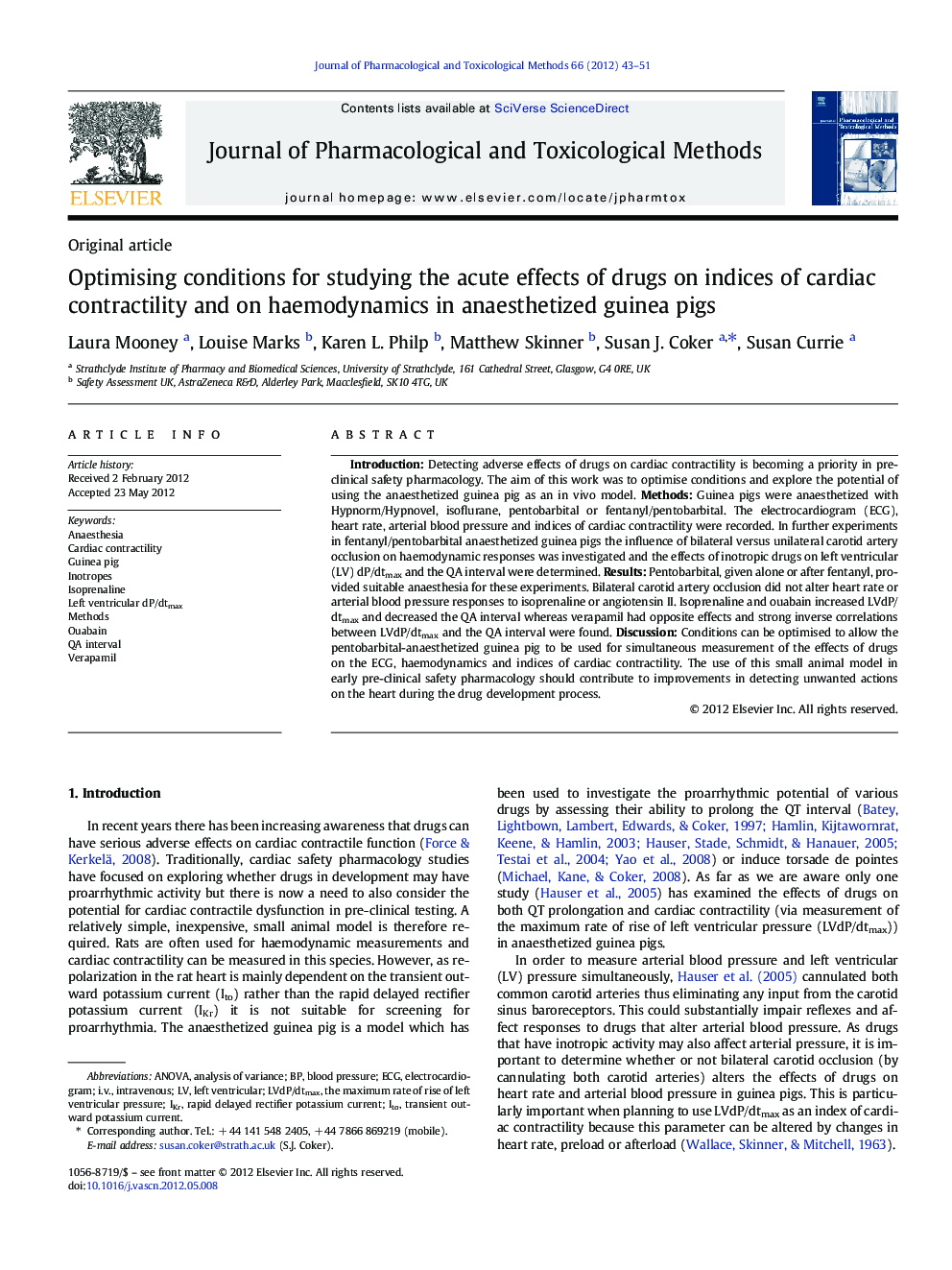| Article ID | Journal | Published Year | Pages | File Type |
|---|---|---|---|---|
| 2549363 | Journal of Pharmacological and Toxicological Methods | 2012 | 9 Pages |
IntroductionDetecting adverse effects of drugs on cardiac contractility is becoming a priority in pre-clinical safety pharmacology. The aim of this work was to optimise conditions and explore the potential of using the anaesthetized guinea pig as an in vivo model.MethodsGuinea pigs were anaesthetized with Hypnorm/Hypnovel, isoflurane, pentobarbital or fentanyl/pentobarbital. The electrocardiogram (ECG), heart rate, arterial blood pressure and indices of cardiac contractility were recorded. In further experiments in fentanyl/pentobarbital anaesthetized guinea pigs the influence of bilateral versus unilateral carotid artery occlusion on haemodynamic responses was investigated and the effects of inotropic drugs on left ventricular (LV) dP/dtmax and the QA interval were determined.ResultsPentobarbital, given alone or after fentanyl, provided suitable anaesthesia for these experiments. Bilateral carotid artery occlusion did not alter heart rate or arterial blood pressure responses to isoprenaline or angiotensin II. Isoprenaline and ouabain increased LVdP/dtmax and decreased the QA interval whereas verapamil had opposite effects and strong inverse correlations between LVdP/dtmax and the QA interval were found.DiscussionConditions can be optimised to allow the pentobarbital-anaesthetized guinea pig to be used for simultaneous measurement of the effects of drugs on the ECG, haemodynamics and indices of cardiac contractility. The use of this small animal model in early pre-clinical safety pharmacology should contribute to improvements in detecting unwanted actions on the heart during the drug development process.
